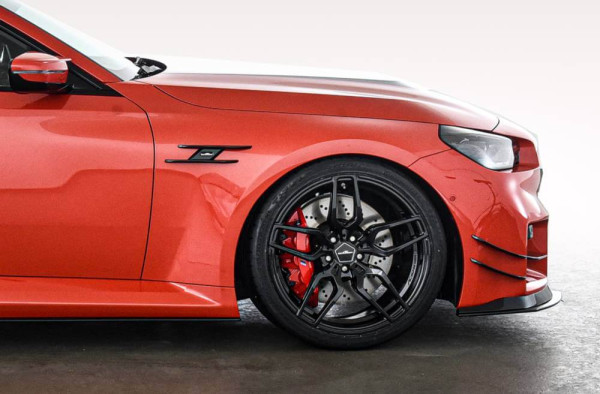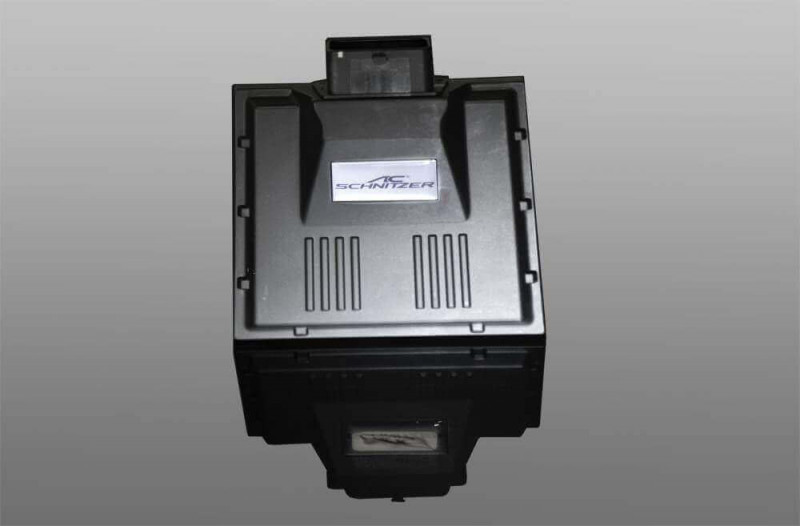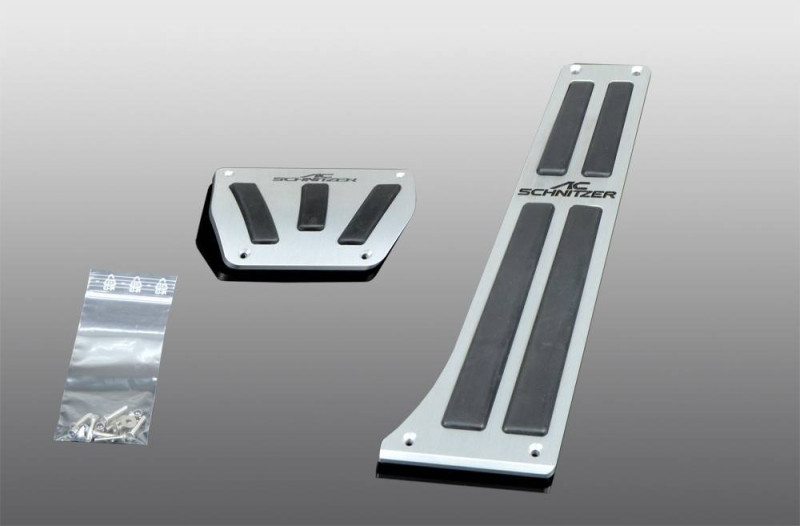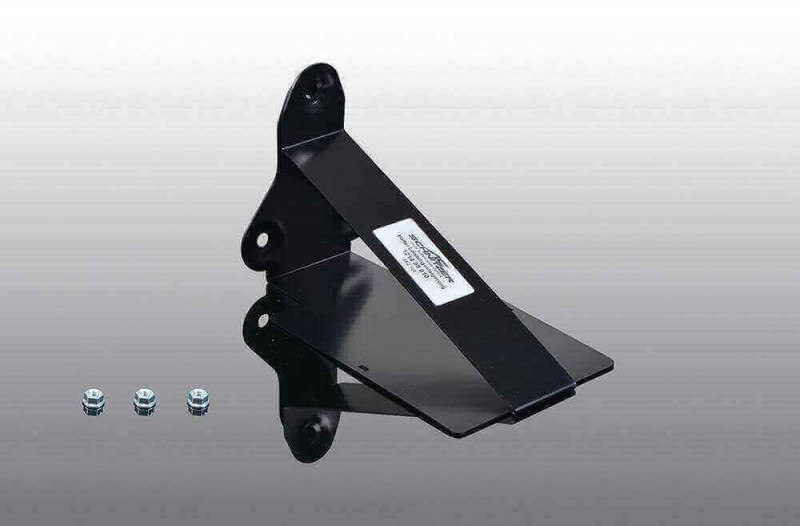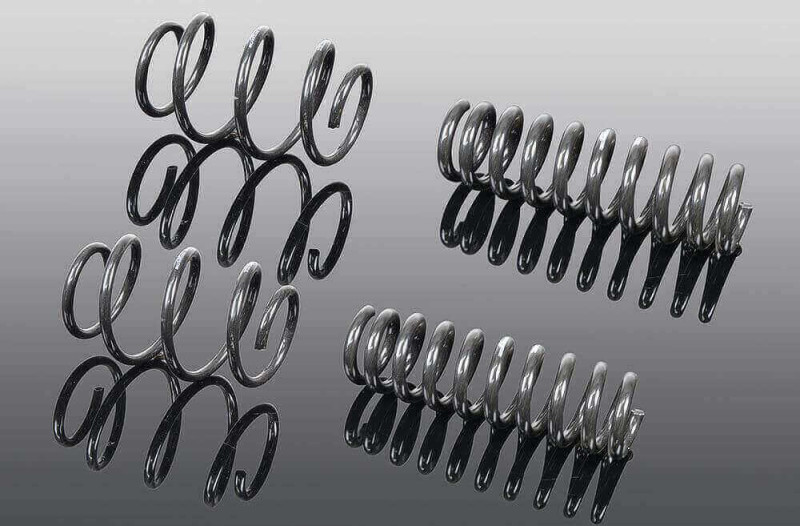AC Schnitzer 21" wheel & tyre set AC4 forged black Michelin for BMW M8 F93
- Part no: 82422916628
€8,118.00 *
Prices incl. VAT plus shipping costs
Ready to ship today,
Delivery time appr. 1-3 workdays
Low stock level
Product information
Overview
including RDC wheel electronics modules
- for M8 F93
- Registration per individual approval §19.2
Wheel set with AC4 Lightweight Forged Wheels
- for vehicles with rear wheel drive
- Weight-optimized rims through forging technology paired with premium tires
- Vehicle-specific tuning through multi-stage driving tests on road and race track
Uniqueness of the wheel set with AC4 Lightweight Forged Wheels
- rim with integrated lettering: "AC Schnitzer" and "GESCHMIEDET"
- open design in Black, giving a clear view of the brakes
- Compatible with standard RDC system
- Rim also available separately
- 2 years warranty
- Developed exclusively for BMW vehicles
- Production monitored according to ISO standard
- KDS mount for wheel alignment according to BMW specification is available
- for M8 F93
- Registration per individual approval §19.2
Wheel set with AC4 Lightweight Forged Wheels
- for vehicles with rear wheel drive
- Weight-optimized rims through forging technology paired with premium tires
- Vehicle-specific tuning through multi-stage driving tests on road and race track
Uniqueness of the wheel set with AC4 Lightweight Forged Wheels
- rim with integrated lettering: "AC Schnitzer" and "GESCHMIEDET"
- open design in Black, giving a clear view of the brakes
- Compatible with standard RDC system
- Rim also available separately
- 2 years warranty
- Developed exclusively for BMW vehicles
- Production monitored according to ISO standard
- KDS mount for wheel alignment according to BMW specification is available
FA: 10,0 x 21" ET 23 with 275/30 R 21
RA: 10,0 x 21" ET 17 with 285/30 R 21
Scope of delivery
- 4 complete wheels:
AC Schnitzer AC4 Lightweight Forged Alloy Wheels with premium tyres - mounted and balanced
- vehicle and rim-specific mounting and fastening material
- 4 pieces RDC wheel electronic module
- pentagonal hub cover with AC Schnitzer logo
- quality tag
- certificate of authenticity
- care instructions
- homologation certificate
RA: 10,0 x 21" ET 17 with 285/30 R 21
Scope of delivery
- 4 complete wheels:
AC Schnitzer AC4 Lightweight Forged Alloy Wheels with premium tyres - mounted and balanced
- vehicle and rim-specific mounting and fastening material
- 4 pieces RDC wheel electronic module
- pentagonal hub cover with AC Schnitzer logo
- quality tag
- certificate of authenticity
- care instructions
- homologation certificate
Description
Wheelset development at AC Schnitzer
A few definitions in advance
Wheel/complete wheel = rim incl. tyre
Wheel set = 4 wheels
xi/xd wheel sets = special wheel sets for all-wheel drive vehicles (xDrive)
Mixed-sized tyres = tyres wider on the rear axle than on the front axle
All-round tyres = same tyre size on the front and the rear axle
The wheels have a really important role: they are the postcard-sized connection between the vehicle and the road. They play a key role in the driving and propulsion as well as the deceleration - i.e. braking - of your vehicle. This gives the wheels a key role. Anyone who develops and sells wheels therefore has a great responsibility. We are aware of this responsibility; we have internalized it and implement it with every new development.
AC Schnitzer only uses high-quality brand tyres, which are developed in close cooperation with premium tyre manufacturers. On the one hand, the tyres have to transfer the power of the engine perfectly to the road, on the other hand, properties such as braking behaviour, lateral control, water drainage in rain and the properties in straight running are important decision criteria for or against a tyre.
A wheel set with wide base tyres is always also an investment in increasing driving safety and dynamics. In order to maintain driving comfort when using larger wheel dimensions, we at AC Schnitzer have actively opted against run-flat tyres and for sporty, conventional tyres. Conventional tires build up less rolling resistance and offer noticeably more comfort.
AC Schnitzer specialises in mixed-sized tyres, i.e. wheel sets in which the wheels of the rear axle are wider than those of the front axle. This makes sense in terms of driving dynamics, as it allows strong drive forces to be transmitted while at the same time enabling high steering precision. Although the wider a tyre is, the more power you can put on the road, the rolling resistance caused by the tyre must not become too high. As the rolling resistance increases the wider a tyre is, AC Schnitzer works out the wheel dimensions that are balanced.
AC Schnitzer develops special wheel/tyre combinations for all-wheel drive vehicles and orientates itself on the specifications of the vehicle manufacturer. These AC Schnitzer wheel sets are marked "xi/xd". Only those wheel dimensions are developed and approved for all-wheel drive vehicles that are as gentle on transfer cases as standard wheel sets.
All AC Schnitzer wheel sets are tuned in multi-stage driving tests in traffic and on race tracks. Only after successful test runs the wheels are released for sale. All AC Schnitzer wheel sets are delivered fully assembled and balanced. They are subject to a two-year manufacturer's warranty. The scope of delivery includes mounting materials such as adapters and wheel bolts as well as the homologation certificate (with the exception of marked wheelsets for export).
Philosophy/Design
The wheels not only physically but also optically connect a car to the road. “That‘s why it‘s very important to have the right dimensions between the proportions of the rims to the bodywork,“ explains AC Schnitzer chief designer Michele Viandante. Rims that are too small quickly make a vehicle appear high-legged and unstable. The new Lightweight Forged Rims ”AC4“ from AC Schnitzer, on the other hand, are truly earthy.
- machined “GESCHMIEDET” logo on the front
- machined original “AC Schnitzer“ logo
- open design in Black, giving a clear view to the brakes
The AC4 Wheels are an absolute highlight in the AC Schnitzer wheel range. These Lightweight Forged Wheels - in Schwarz - achieve what appears to be fundamentally contradictory: reduction in weight on the one hand and the largest possible wheel diameters and widths on the other. The AC Schnitzer engineers and designers implement this apparent contradiction with the AC4 Lightweight Forged Rim: the design is completely independent - although the relationship to the successful Type V rim is unmistakable.
AC Schnitzer already gave the one-piece Lightweight Forged Rims AC4 extremely sporty genes in their design and these manifest themselves in their outer appearance: the central element is the filigree yet massive spoke matrix with its five triangular struts. The strong concave centre, to which the spokes seem to rush, underlines the uncompromisingly dynamic impression.
The weight of the front axle rim and for the rear axle rim is sporty 12.8 kg.
- high quality lightweight forged wheels save approx. 25-35% weight, compared with conventional cast wheels
- perceptible reduction in unsprung mass and gyroscopic forces on the car, therefore
- significantly improved driving dynamics
- significantly improved acceleration and deceleration due to lower masses
- improved cornering handling
- high quality clear lacquer protects the wheel against corrosion, therefore
- long life
Material
About 97 percent of the melt consists of aluminium, but the remaining three percent of the wrought alloy also helps to influence the desired properties of the material for the ideal wheel. In addition to the main component aluminium, the alloy also contains one percent magnesium and one percent titanium each (which ensures finer grain size). The precise composition of the material alloy has a decisive influence on the subsequent properties of the wheel.
Pure Aluminium
Approximately 97 percent of the alloy consists of pure aluminium. The remaining three percent of the wrought alloy is important for the properties of the material.
Chrome
The AlCr20 master alloy with the hard metal chromium improves recrystallisation resistance. Master alloy means a mixture of aluminium with other materials, in this case it is a maximum of 0.25% by weight of chromium, i.e. a very small amount.
Magnesium
Together with pure silicium, magnesium leads to a higher strength of the total alloy. The maximum proportion of these materials is 1.2 and 1.3 percent by weight, respectively.
Titanium
These glossy ingots are the master alloy AlTi5B1, which serves a finer grain structure of the total alloy. The proportion of the expensive raw material titanium is only 0.1 percent by weight.
Silicium
These irregularly shaped lumps are only added to the alloy together with magnesium. This increases the strength. The silicium content is between 0.7 and 1.3 percent by weight.
Manganese
The addition of 0.4 to 1.0 % manganese makes the alloy tougher. Manganese has a positive effect on recrystallisation behaviour.
Manufacture
Forging - an elaborate process that must offer maximum safety. In many steps the wheel is prepared for its important task for a long car life. The process control guarantees excellent material properties, which are the reason for the low weight of our forged wheels. Even in critical driving situations, forged wheels offer the occupants optimum safety.
Step 1: The nozzle
A cast block more than 6 m long manufactured by OTTO FUCHS is the starting material from which a socket, which is precisely matched to the later wheel, is sawn off.
Step 2: Pre-forging
In the first forging stage, the nozzle is pre-forged into a rotationally symmetrical blank with a force of 4,000 tons.
Step 3: Design forging
In the second forming stage, the styling is pressed into the pre-forged blank under a 7,000 ton press, which gives the wheel its later appearance to a large extent.
Step 4: Punching
In the last forging stage with 800 tons of pressing force, the later ventilation hole windows and the hub bore are punched out and the burr of excess material sheared off at the outer circumference.
Step 5: Flow pressing
The outer edge of the blank is heated. The entire rim area, from outer to inner horn, is rolled out.
Step 6: Finishing
The final step is finishing: turning, drilling and deburring. Painting rounds off the complex process.
Source: Material and Production: Otto Fuchs KG
Surface Schwarz
In this process, the wheel is first primed, then completely painted. A two-layer clear coat is then applied, consisting of a polyester primer and the matt acrylic clear coat.
Test Procedures / Safety
After their design, the first sample rims are manufactured under real production conditions. These must undergo a multitude of tests. Among other things, the strength is tested. The "rim life" is simulated in the bending circumferential test. Every AC Schnitzer rim must withstand this intact in order to be allowed to be produced and sold at all.
This is followed by vehicle-specific tests, including test installations with check of unobstructed movement and driving tests on public roads and on race tracks. Only after these procedures our rims receive their homologation, i.e. the approval to be used in road traffic.
Wheels are safety-relevant components. Therefore, they are checked and tested with the greatest care. This starts with the first chemical material tests and ends with hard testing machine endurance runs:
- § 30 StVZO wheel guideline
- ECE R124
- Bending-rotation tests
- 90° impact test
- unwinding tests
Scope of delivery:
- 4 complete wheels:
AC Schnitzer AC4 Lightweight Forged Alloy Wheels with premium tyres - mounted and balanced
- vehicle and rim-specific mounting and fastening material
- pentagonal hub cover with AC Schnitzer logo
- quality tag
- certificate of authenticity
- care instructions
- homologation certificate
Uniqueness of the lightweight forged rims AC4
- rim with integrated lettering: "AC Schnitzer" and "GESCHMIEDET"
- open design in Black, giving a clear view of the brakes
- Compatible with standard RDC system
- Rim also available separately
- 2 years warranty
- Developed exclusively for BMW vehicles
- Production monitored according to ISO standard
- KDS mount for wheel alignment according to BMW specification is available
EU Tire Label
 Full efficiency:
Full efficiency:
|
Front axle: | C |
| Rear axle: | C | |
 Wet grip:
Wet grip:
|
Front axle: | A |
| Rear axle: | A | |
 Noise level:
Noise level:
|
Front axle: | B / 71 |
| Rear axle: | B / 73 |
Multimedia & Documentation
Via the following link you will find further relevant information on the product, such as installation instructions or the expert opinion (provided the product is approved for road use).
OPEN DOCUMENT
Do you wish an assembly?
Add your items to the wishlist & select an AC Schnitzer partner. You will receive a total offer for the parts & assembly from our partner.
Do you have a question?
Write us your question about the product or about product safety using the following contact options:
ASK NOW
Manufacturer information
KOHL automobile GmbH
AC Schnitzer
Neuenhofstraße 160
D 52078 Aachen
E-Mail: info@ac-schnitzer.de
KOHL automobile GmbH
AC Schnitzer
Neuenhofstraße 160
D 52078 Aachen
E-Mail: info@ac-schnitzer.de
AC Schnitzer 21" wheel & tyre set AC4 forged black Michelin for BMW M8 F93
- Part no: 82422916628
€8,118.00 *
Prices incl. VAT plus shipping costs
Ready to ship today,
Delivery time appr. 1-3 workdays
Low stock level
